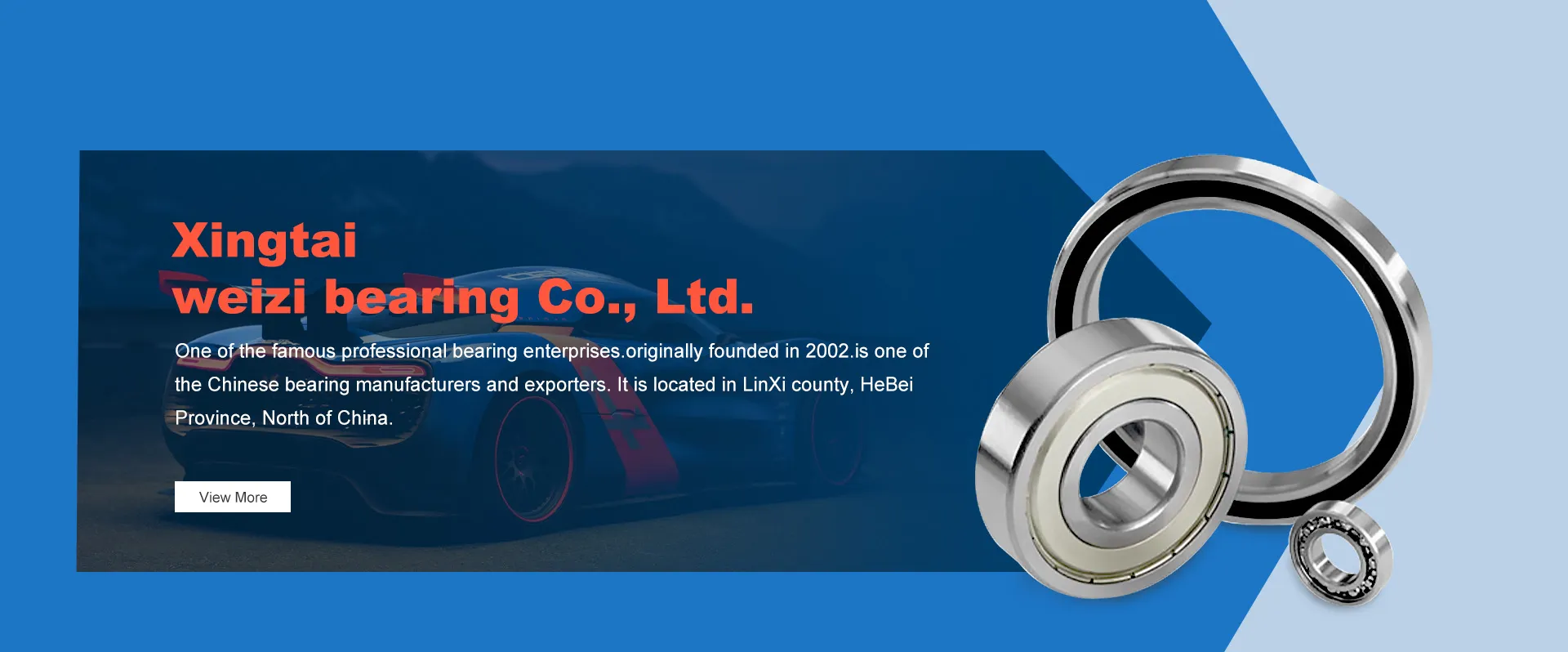
Dec . 05, 2024 20:11 Back to list
thrust bearing and radial bearing
Understanding Thrust Bearings and Radial Bearings
In the world of mechanical engineering, bearings play a critical role in ensuring the smooth and efficient operation of machinery. Among the various types of bearings, thrust bearings and radial bearings are two primary classifications, each serving distinct functions within mechanical systems. This article will delve into the principles, applications, and differences between these two essential components.
Thrust Bearings
Thrust bearings are designed to accommodate axial loads, which are forces applied parallel to the axis of rotation. These bearings are crucial in applications where components experience significant thrust, such as in automotive transmissions, turbines, and large industrial machinery. Thrust bearings can be categorized into several types, including ball thrust bearings, roller thrust bearings, and fluid thrust bearings, each offering unique advantages depending on the application.
The primary function of thrust bearings is to support the axial load and limit the movement of rotating components in the axial direction. This is achieved through the use of rolling elements, such as balls or rollers, which are arranged to enable smooth movement while minimizing friction. Given their design, thrust bearings are often used in scenarios involving heavy loads and high speeds, where conventional bearings might not suffice.
Radial Bearings
In contrast, radial bearings are designed to handle radial loads, which are forces exerted perpendicular to the axis of rotation. These bearings are ubiquitous in various applications, ranging from electric motors and generators to gearboxes and pumps. Like thrust bearings, radial bearings can come in several forms, including deep groove ball bearings, cylindrical roller bearings, and angular contact bearings.
Radial bearings primarily provide support to rotating shafts by allowing them to spin while maintaining their position. They typically feature an inner and outer ring with rolling elements positioned between them. The design of these bearings allows them to reduce friction and wear between moving parts, facilitating smoother operation and extending the lifespan of machinery.
Key Differences
thrust bearing and radial bearing

While both thrust and radial bearings serve the essential function of reducing friction and supporting loads, their operational characteristics and applications differ significantly. Thrust bearings are specifically intended to manage axial loads and prevent axial movement, while radial bearings focus on managing radial loads and maintaining shaft alignment.
Moreover, the design and construction of these bearings vary according to their intended purpose
. For example, thrust bearings might employ a more substantial and robust construction to withstand high axial forces, while radial bearings may focus on minimizing friction for smoother rotational movement.Applications
The applications of thrust and radial bearings are diverse, reflecting their unique features and capabilities. Thrust bearings are commonly found in applications such as
- Automotive applications (e.g., gear systems) - Marine equipment (e.g., propeller shafts) - Aerospace components (e.g., jet engines) - Industrial machinery (e.g., presses and mills)
Radial bearings, being more versatile, are widely used in
- Electric motors and generators - Pumps and compressors - Conveyors and industrial equipment - General machinery that requires shaft support
Conclusion
In summary, both thrust bearings and radial bearings are vital components in various mechanical systems, each addressing specific load requirements and operational conditions. Understanding their functions, differences, and applications allows engineers and designers to choose the appropriate bearing type for their projects, ensuring optimal performance and longevity of machinery. As technology advances, the design and materials used in both thrust and radial bearings will continue to evolve, further enhancing their capabilities in meeting modern engineering challenges.
Latest news
-
Grooved Ball Bearing Design and Functionality
NewsJun.04,2025
-
Concrete Mixer Bearing Load Capacity Testing
NewsJun.04,2025
-
6004 Bearing Dimensions in Robotic Joint Designs
NewsJun.04,2025
-
Advantages of Single-Row Deep Groove Ball Bearings
NewsJun.04,2025
-
Applications of Deep Groove Ball Bearings in Automotive Systems
NewsJun.04,2025
-
Innovations in Bearing Pressing Machine Design
NewsJun.04,2025
